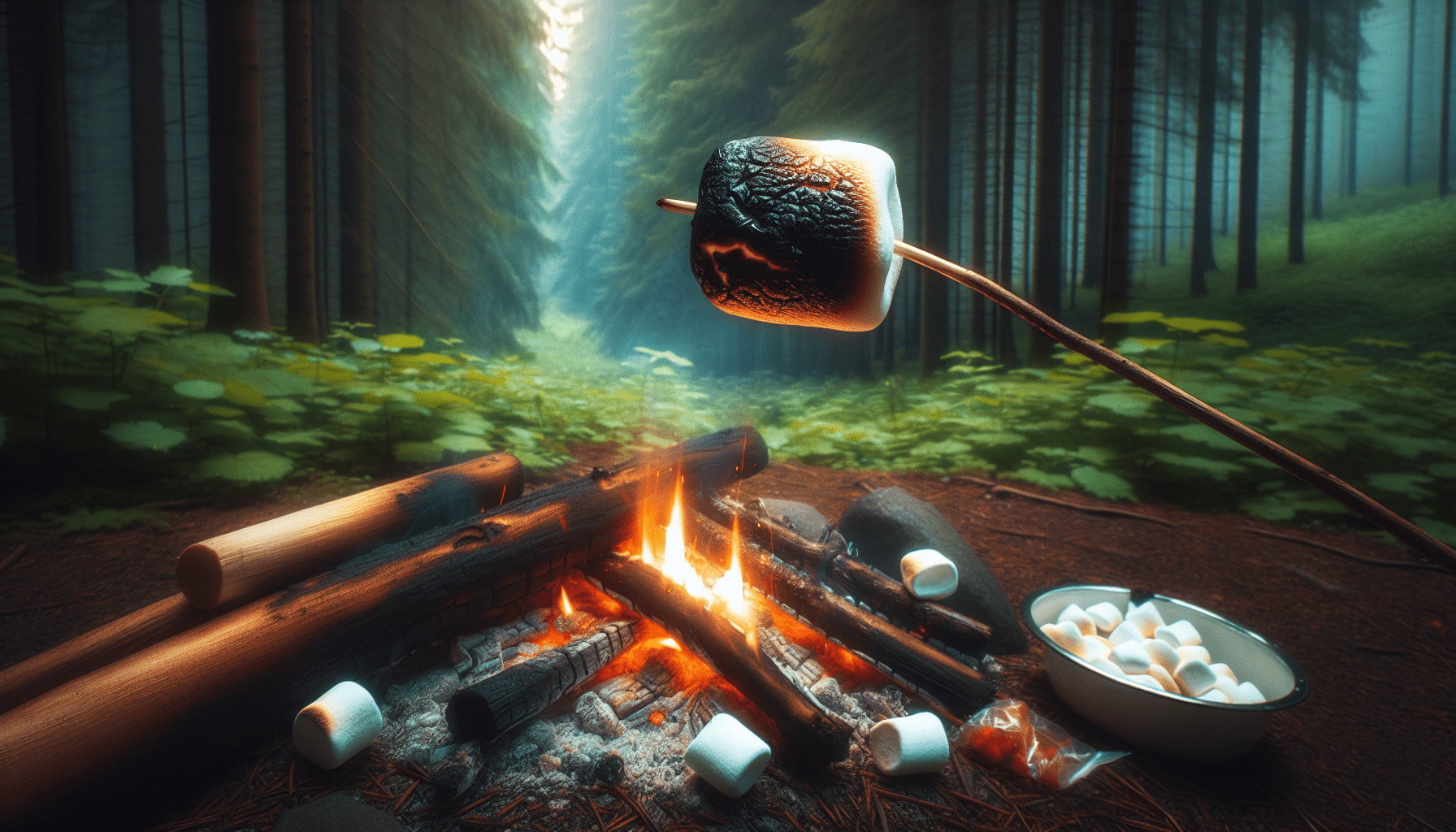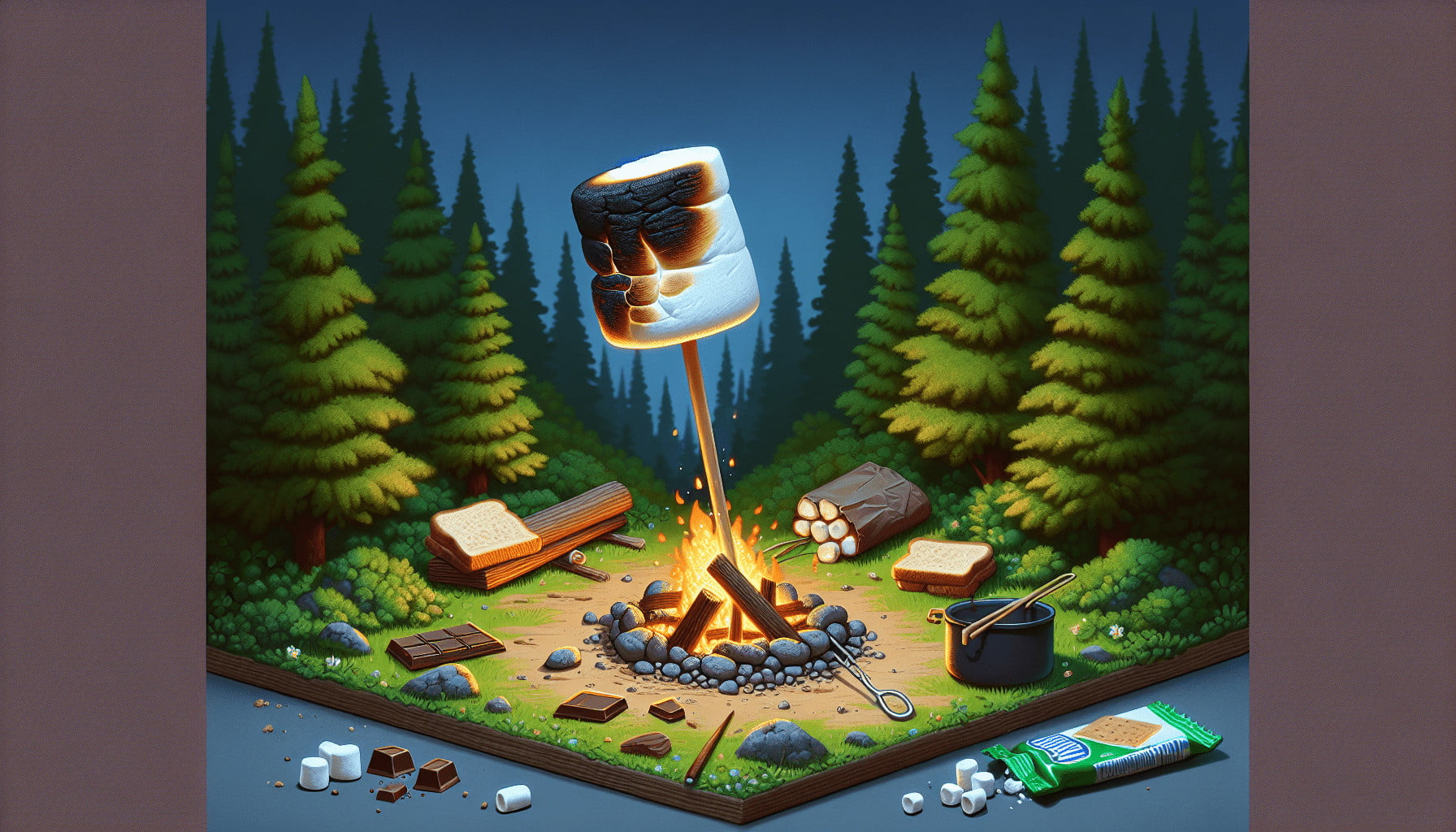Have you ever packed up for a camping trip, all excited about the culinary adventures awaiting you around the campfire, only to end up with charred sausages and half-cooked potatoes? You’re not alone! Cooking over an open flame is a timeless and rewarding part of the camping experience, but it can also be tricky if you don’t know the ins and outs. To make sure your next campfire meal is a hit, let’s take a look at the top campfire cooking mistakes to avoid.
Underestimating the Power of the Fire
Ignoring Fire Control
One of the biggest mistakes is underestimating the power of your fire. Your campfire can go from roaring flames to dying embers in a matter of minutes. It’s crucial to manage the size and heat of your fire effectively. An uncontrolled fire can burn your food faster than you can say “S’mores,” while a weak fire might leave you with raw food.
Not Prepping the Fire Area
Before even striking a match, clearing your fire area is essential for both safety and effective cooking. Make sure there are no overhanging branches, and clear away any dried leaves or twigs that might easily catch fire. By preparing your cooking area, you create a safer environment and ensure that your cooking conditions are optimal.
Failing to Choose the Right Wood
Using Green Wood
Green wood, or wood that is freshly cut and still full of sap, produces a lot of smoke without generating much heat. This can lead to a smoky, undercooked meal. Always opt for seasoned, dry wood to ensure a clean, efficient burn.
Skipping on Hardwood
Using softwood like pine and spruce can result in a quick-burning but less intense fire. Hardwood, such as oak, maple, or hickory, burns longer and hotter, making it better suited for campfire cooking. Plus, hardwood provides a more stable source of heat, which is easier to control.
Not Preheating Cooking Surfaces
Ignoring Skillet and Grate Preheat
You wouldn’t dream of cooking on a cold stove at home, yet many forget to preheat their campfire cookware. Whether you’re using a cast-iron skillet or a cooking grate, make sure to allow it ample time to heat up over the fire. This ensures even cooking and better flavor.

Using the Wrong Cooking Tools
Overlooking Essential Utensils
The tools you take for campfire cooking matter more than you might think. Investing in long-handled tongs, spatulas, and spoons designed for campfire use can save you from many a singed arm hair. Lightweight, portable campfire cookware can also make a significant difference.
| Essential Campfire Tools | Description |
|---|---|
| Long-handled Tongs | For safely turning and handling food without getting too close to the flames. |
| Cast-iron Skillet | Heats evenly and can handle high temperatures. Great for frying and searing. |
| Cooking Grate | A stable surface for cooking directly over the flames. |
| Dutch Oven | Ideal for slow-cooking stews, soups, and casseroles. |
Inadequate Meal Planning
Lack of Prep Work
Preparation is key to a successful campfire meal. At home, chop vegetables, marinate meats, and measure out spices beforehand. Store everything in airtight containers to keep it fresh until you’re ready to cook. This not only makes cooking easier but also ensures you don’t forget any crucial ingredients.
One-pot Wonders Overload
While one-pot meals are convenient, relying solely on them can become monotonous. Plan a variety of dishes to keep your taste buds entertained. Experimenting with different cooking methods and recipes can make your campfire culinary experience more exciting.
Cooking Everything at High Heat
Misjudging Heat Levels
Cooking everything at the same high heat can result in a lot of burned exteriors and raw interiors. Different foods require different cooking heat levels. Maintaining a range of heat zones on your campfire—hot for quick sears and cooler for slow-cooking—can greatly enhance your cooking results.
| Food Type | Ideal Heat Level |
|---|---|
| Meats (steak, burgers) | High heat for searing, then move to medium heat. |
| Vegetables | Medium to low heat for steady cooking. |
| Potatoes | Medium heat, finished on low for thorough cooking. |
| Bread and Dough | Low, steady heat to avoid burning the exterior. |

Overlooking Food Safety
Ignoring Hygiene
It’s easy to get caught up in the rustic charm of campfire cooking and overlook basic hygiene practices. Always wash your hands and keep your cooking area clean to avoid foodborne illnesses. Use separate cutting boards and utensils for raw meats and vegetables, and make sure your perishable foods are stored properly.
Neglecting Temperature Monitoring
When it comes to campfire cooking, using a meat thermometer can be a game-changer. It ensures that your meat is cooked to a safe temperature, avoiding the risk of undercooked food that can harbor harmful bacteria.
Insufficient Cooking Experience
Skipping Practice
The more you cook over a campfire, the better you’ll get at it. Don’t wait until you’re in the great outdoors to try out new recipes or cooking techniques. Practice at home on a barbecue grill or in your fireplace to get a feel for how different foods cook over an open flame.
Neglecting Trial Runs
Before using your fancy new camping cookware on your trip, try it out at home. Understanding how your equipment works in a controlled environment ensures you won’t be struggling with unfamiliar gear when you really need it.
Poor Timing and Coordination
Poor Synchronization
Just like at home, timing is crucial in campfire cooking. Trying to cook everything at once can be chaotic and often results in something overcooked or undercooked. Start with the items that take the longest to cook and work your way down to the fast-cooking foods.
Ignoring Resting Times
Meats, in particular, benefit from resting time where they continue to cook slightly and the juices redistribute. Factor in this time when planning your meal, so everything is ready to eat at the same time.
Not Protecting Food from the Elements
Exposing Ingredients to Sun and Pests
Leaving food out in the open exposes it to the sun and pests. Use coolers and sealable containers to keep everything fresh and bug-free. Ensure that your cooler is well-insulated and stocked with enough ice to last throughout your camping trip.
Wind and Weather Miscalculations
Even a light breeze can seriously affect your campfire. Make sure your cooking area is somewhat shielded from the wind. If rain is in the forecast, consider setting up a tarp or another form of shelter to keep your fire and food dry.
Succumbing to Impatience
Hasty Cooking Decisions
Patience is indeed a virtue when it comes to campfire cooking. Rushing through the cooking process usually leads to subpar meals. Allow the fire to get to the right temperature before starting. Always give your food the time it needs to cook thoroughly.
Neglecting Slow Cooking Benefits
Slow cooking isn’t just for crockpots and ovens. Many campfire recipes benefit from a slow, steady heat. Dishes like stews, soups, and even certain cuts of meat become more flavorful and tender when cooked slowly over a low flame.
Failing to Extinguish the Fire Properly
Ignoring Fire Safety
Once the cooking is done, it’s tempting to leave the fire to die out on its own. However, this can be hazardous. Always ensure you fully extinguish your campfire before leaving it unattended. Use water to douse the flames and stir the ashes until they’re cool to the touch. This not only prevents potential forest fires but also ensures your campsite is safe.
Conclusion
Cooking over a campfire is an art that, when done right, can add immense joy and flavor to your camping adventures. Avoiding these top campfire cooking mistakes—managing your fire, choosing the right wood, prepping properly, using the right tools, planning meals, and ensuring food safety—will make your outdoor culinary efforts more successful and enjoyable. Remember, practice makes perfect, so don’t get discouraged if things don’t turn out perfect the first time. Enjoy the process, savor the results, and happy cooking on your next camping trip!
